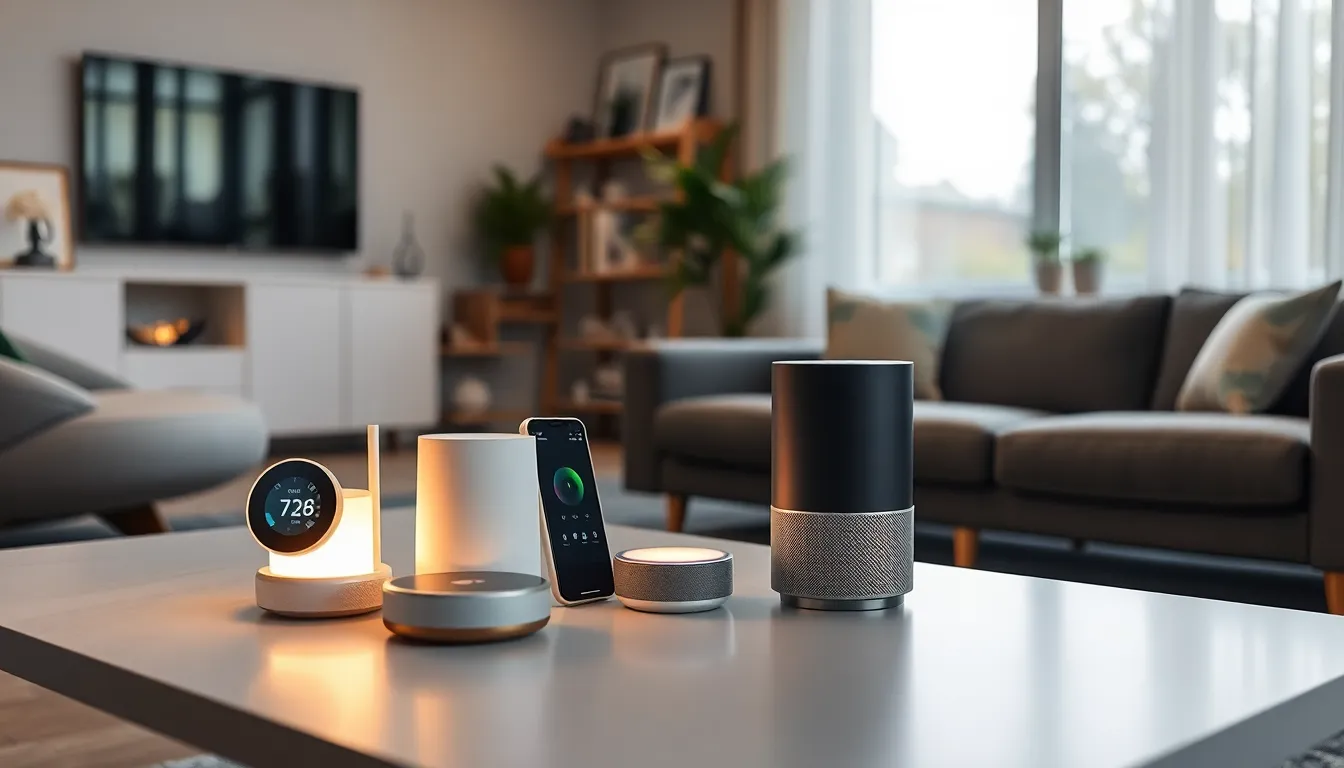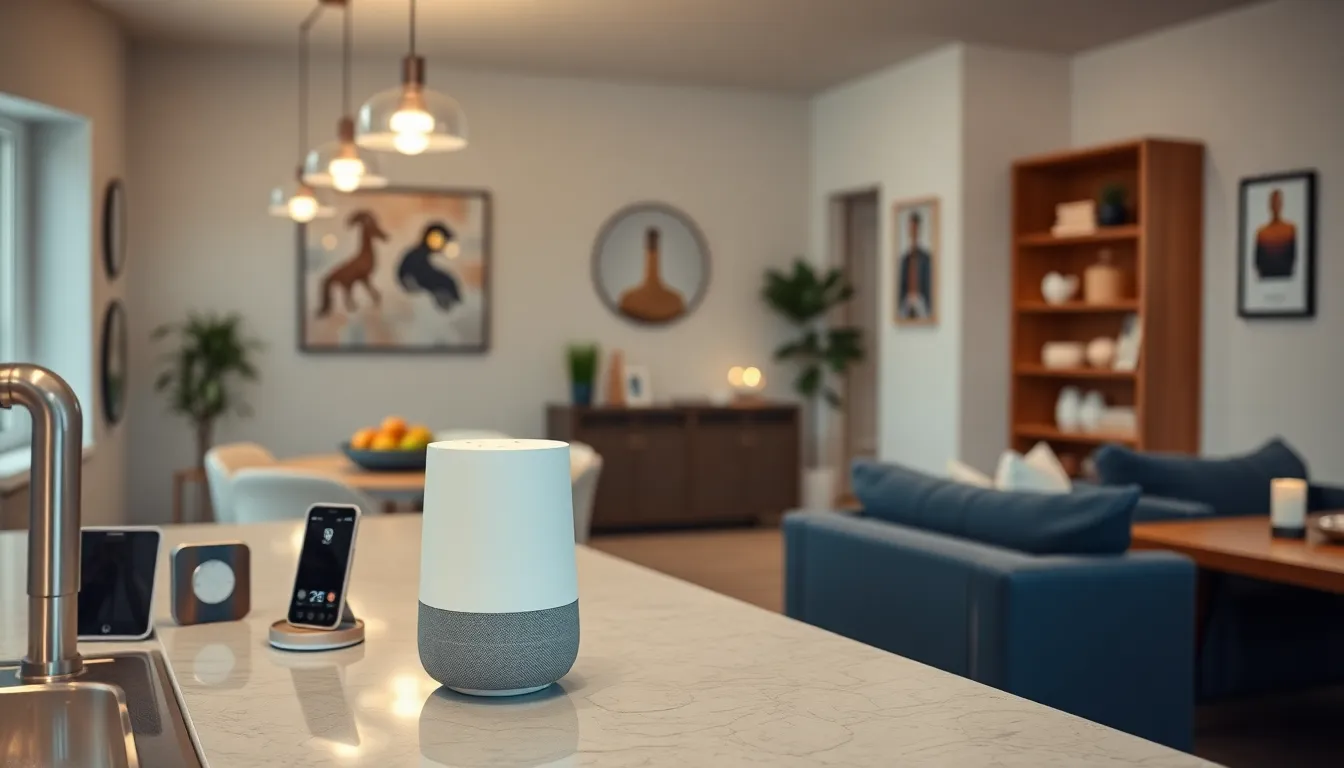Table of Contents
ToggleIn today’s fast-paced world, home assistants have become essential tools for simplifying daily life. These smart devices not only manage tasks but also enhance the overall home experience, making them invaluable companions in modern households. From controlling smart appliances to providing instant information, home assistants are revolutionizing how people interact with their living spaces.
As technology continues to evolve, the capabilities of home assistants have expanded dramatically. They now offer personalized services that cater to individual preferences, creating a seamless blend of convenience and efficiency. With the right home assistant, anyone can transform their home into a hub of innovation and comfort, ultimately leading to a more organized and enjoyable lifestyle.
Overview of Home Assistant
Home assistants function as central hubs for managing smart home devices, streamlining tasks through voice commands and automations. These devices use artificial intelligence to learn user preferences, allowing for tailored experiences.
Home assistants typically integrate with various smart devices, such as lights, thermostats, and security systems. Users control these devices through mobile apps or voice commands, enhancing convenience and efficiency.
Advanced features include setting reminders, providing weather updates, and playing music, which demonstrate the versatility of home assistants. They can support multiple platforms like Amazon Alexa, Google Assistant, and Apple HomeKit, fostering compatibility with a range of devices.
The rise of home assistants contributes to energy savings by optimizing usage patterns. Research shows that smart home technology can reduce energy consumption by approximately 15-30%.
Enhanced security and safety features protect homes. Home assistants can monitor surveillance cameras, send alerts, and control smart locks, providing peace of mind for users.
Incorporating home assistants in daily routines leads to organized living environments. These devices not only save time but also contribute to a more enjoyable home experience, ultimately transforming how individuals interact with their living spaces.
Features of Home Assistant


Home assistants offer a range of features that enhance functionality and improve user experience. Their automation capabilities, device compatibility, and user interface design represent significant advantages for smart home management.
Automation Capabilities
Automation capabilities allow home assistants to perform tasks automatically based on user-defined conditions. Users can create routines for specific times or events, like turning off lights when leaving a room. They can also set triggers, such as adjusting the thermostat when a user arrives home. These features save time and streamline daily activities.
Device Compatibility
Device compatibility enables home assistants to integrate with numerous smart devices across various brands. They support Wi-Fi, Zigbee, and Z-Wave technologies, facilitating connections with smart lights, thermostats, cameras, and appliances. This diverse ecosystem allows users to manage multiple devices from a single interface, enhancing convenience and control.
User Interface
The user interface provides an intuitive experience for managing smart home features. Most home assistants offer voice control, mobile app access, and web-based dashboards. Users interact seamlessly with their devices, accessing settings and functionalities quickly. Visual layouts often include customizable dashboards, allowing users to prioritize and arrange devices according to personal preferences.
Setting Up Home Assistant
Setting up a home assistant involves a systematic approach to ensure seamless integration and functionality within the smart home environment. Detailed steps below guide through the installation and configuration process.
Installation Process
- Choose Hardware: Select a suitable hardware platform, such as a Raspberry Pi, a dedicated server, or a cloud-based solution. Each option offers different performance capabilities and installation requirements.
- Download Software: Obtain the latest version of Home Assistant from the official website (home-assistant.io). Select the appropriate installation method based on the chosen hardware.
- Create Bootable Media: For devices like Raspberry Pi, create a bootable SD card using software like Balena Etcher. Load the Home Assistant image onto the SD card for installation.
- Connect Devices: Connect the hardware to a power source and network. Ensure the device has internet access for necessary updates and integrations.
- Access User Interface: After booting, locate the Home Assistant user interface by entering the device’s IP address into a web browser. Complete any initial setup prompts to ensure a personalized experience.
Configuration Tips
- Automate Functions: Set up automations based on specific conditions, such as motion detection or time schedules. This enhances the smart home experience by promoting efficiency.
- Integrate Devices: Use the integrations menu to connect various smart devices. Ensure compatibility with major brands and protocols such as Zigbee, Z-Wave, and Wi-Fi.
- Customize Dashboard: Personalize the Home Assistant dashboard to display key information and controls. Add frequently used features for quick access.
- Leverage Voice Commands: Enable voice control for hands-free operation. Integrating with services like Google Assistant or Amazon Alexa improves accessibility.
- Maintain Security: Regularly update the system and configure user permissions. Use secure connection protocols to safeguard against unauthorized access.
- Utilize Community Resources: Explore forums and documentation provided by the Home Assistant community. These resources offer valuable insights and troubleshooting tips.
By following these steps, one ensures a robust setup that maximizes the potential of a home assistant in any smart home environment.
Pros and Cons of Home Assistant
Home assistants come with several advantages and limitations that users should consider. Understanding these factors helps potential users make informed decisions.
Advantages
- Centralized Control: Home assistants provide a single platform for managing various smart devices, streamlining user interaction.
- Voice Activation: Users can control devices hands-free with voice commands, enhancing convenience and accessibility.
- Customization: Users can tailor automation routines and settings according to personal preferences, resulting in a personalized experience.
- Energy Efficiency: Home assistants help optimize energy consumption, potentially reducing costs by 15-30% through smart management.
- Enhanced Security: They enable real-time monitoring of security systems, offering alerts and remote control over locks and cameras for peace of mind.
- User Learning: Advanced artificial intelligence capabilities enable home assistants to learn preferences over time, enhancing service delivery.
- Integration: Compatibility with a diverse array of devices allows seamless integration across different smart technologies.
Limitations
- Privacy Concerns: Continuous listening and data collection may raise privacy issues for some users.
- Dependence on Internet: Many features require a stable internet connection, limiting functionality during outages.
- Initial Setup Complexity: Configuring devices and settings can be complicated for users with limited technical knowledge.
- Limited Interoperability: Some devices may not be compatible, restricting full utilization of a home’s smart ecosystem.
- Costs: Initial investment in smart devices and their setup can be high, affecting overall affordability for some users.
- Software Updates: Frequent updates are necessary for optimal performance, which may require user involvement and knowledge.
- Learning Curve: Users may need time to familiarize themselves with capabilities, features, and interfaces of home assistants.
Community and Support for Home Assistant
Home Assistant enjoys a robust community and extensive support resources. Users benefit from active forums, dedicated Discord channels, and comprehensive documentation. These platforms foster collaboration, allowing users to share experiences, troubleshoot issues, and exchange automation ideas.
Community Forums
Community forums provide a space for discussion and problem-solving. Experienced users and newcomers alike can post questions and receive guidance from knowledgeable members. Popular platforms include:
- Home Assistant Community: A primary forum for sharing projects and seeking support.
- Reddit: Subreddits like r/homeassistant feature discussions and updates related to the platform.
Documentation
Comprehensive documentation ensures users understand all features and functionalities. The official Home Assistant website includes:
- Getting Started Guides: Step-by-step instructions for new users.
- Integration Documentation: Detailed information on connecting devices and services.
Discord Channels
Discord channels facilitate real-time communication among users. Participants can ask questions, share tips, and collaborate on projects.
Support Options
Home Assistant offers several support options, ensuring that users access help when needed. These include:
- GitHub Issues: Users can report bugs or suggest features directly on the GitHub repository.
- Developer Support: For developers, the community provides resources for creating integrations and custom components.
User Groups and Meetups
Local user groups and meetups connect enthusiasts in person. These gatherings foster knowledge sharing, demos, and discussions about the latest developments in home automation technology.
By leveraging community resources and support options, users can enhance their experience with Home Assistant, optimizing their smart home environments and maximizing device functionality.




